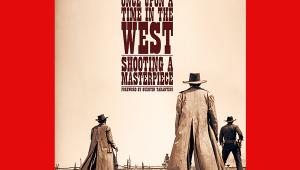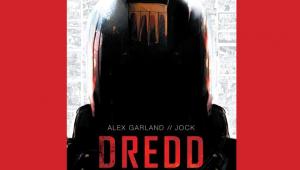The Hammer Vault
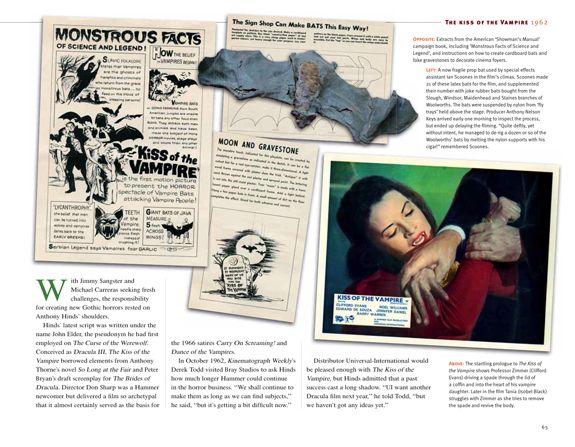
 The last few years have seen an explosion in the growth of so-called Vault publications. These prestige-format coffee-table releases typically take the form of an archive of background info and rare imagery related to a specific company or franchise, and often come accompanied by numerous reproductions of 'artefacts' that fans simply wouldn't be able to get hold of any other way. Or that's how it all started.
The last few years have seen an explosion in the growth of so-called Vault publications. These prestige-format coffee-table releases typically take the form of an archive of background info and rare imagery related to a specific company or franchise, and often come accompanied by numerous reproductions of 'artefacts' that fans simply wouldn't be able to get hold of any other way. Or that's how it all started.
Recent publications have tended to dilute the concept - a prime example of this being the recent Alien Vault: The Definitive Story Behind the Film. This particular title was notable for simply regurgitating behind-the-scenes info, anecdotes and imagery that any fan would already be familiar with thanks to the numerous books/articles published about the film over the decades and the exhaustive collection of supplementary material available in the Alien Anthology Blu-ray boxset. Much the same effect could be gleamed from simply taking a pair of scissors to the pages of The Book of Alien and Giger's Alien and throwing all of the resulting pieces of text and pictures into a cereal box while listening to Ridley Scott's audio commentary for the film.
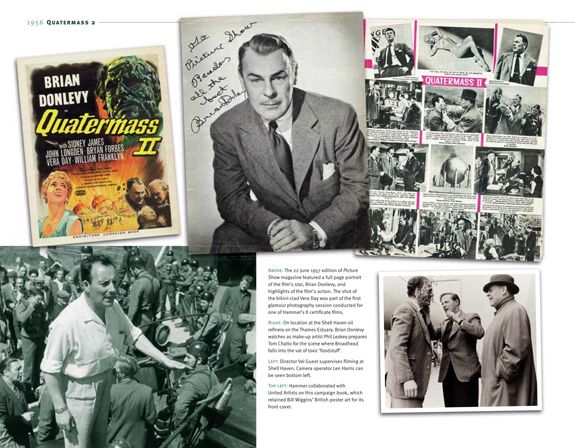
Thankfully, Marcus Hearn's mammoth hardback, The Hammer Vault, avoids all of these pitfalls. This meticulously-researched tome runs through all 83 Hammer Films movies from 1954's The Quatermass Xperiment right up to 2009's Let Me In, along the way also finding the time to cover Hammer's two forays into the world of TV production (1980's Hammer House of Horror and 1983's Hammer House of Mystery and Suspense) and investigating some of the studio's long-gestating projects that never actually came to fruition.
Fans of Hammer's particular brand of horror will undoubtedly be familiar with author Marcus Hearn as he's been responsible for a number of must-own books about the studio, including The Hammer Story: The Authorised History of Hammer Films and (my personal favourite) Hammer Glamour. Having covered the production history of the films in so much detail elsewhere, the author thankfully refrains from repeating himself too much here. Instead, the focus here is on the miscellany that came from the making and promotion of the films, accompanied by a few introductory paragraphs outlining the production and any notable complications or changes in fairly broad strokes.
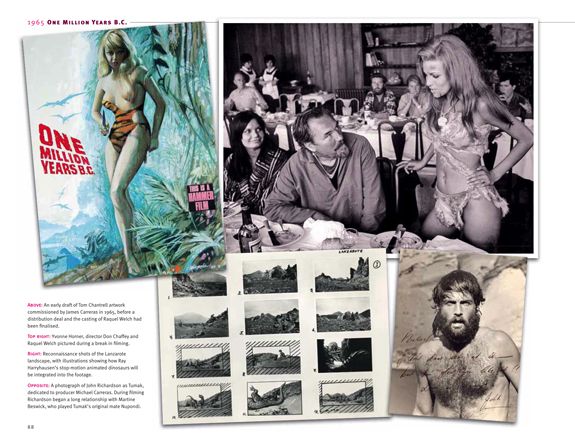
Presented in chronological order, The Hammer Vault devotes a lavish double-page spread to 77 of the studio's feature films. Six lesser features and the two previously mentioned TV shows get a single-page each, while a section devoted to 'Unmade Hammer' gets a more substantial six-pages, due to the number of aborted films it covers. Each serves up an incredible selection of extracts from press and campaign books, rare behind-the-scenes photos, letters and memos, pre-production artwork, lobby cards and front of house stills, and much, much more.
If this all sounds fairly standard for a Vault publication it's the sheer wealth of rare material and the incisive commentary for each provided by Hearn - packed with quotes from the filmmakers and stars themselves - that really makes the book so impressive. Given its standing in the UK (where it surely ranks as our best-known studio, alongside Ealing) Hammer Films's output has been pretty poorly treated when it comes to supplementary material on DVD. Which makes this book and its contents such an absolute godsend for fans.
And the production quality ensures that every photograph, sketch and painting looks absolutely spectacular. Which is a damn good thing when you're dealing with stunning full-colour material like Tom Chantrell's lurid poster concepts (often created before a script was written, based solely on a potential movie title). These pieces of art alone would make any fan go weak at the knees and ready to splurge the £30 asking price for the book. But this is only the tip of this particular terror-tastic treasury.
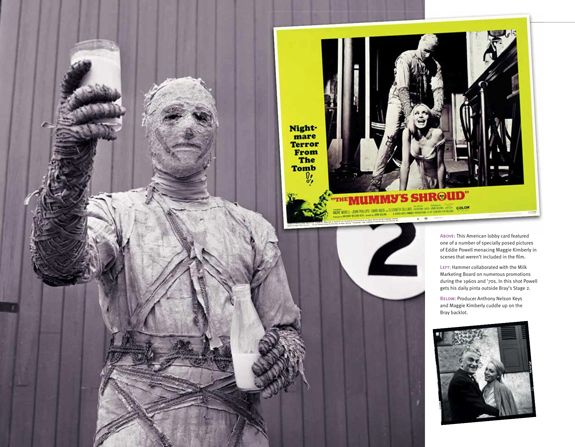
The true joy of the book comes from the insane promotional ideas suggested for the films. One of the suggestions for cinema owners in the campaign book for the The Quatermass Xperiment is 'Ask Women the Question - Would You Steal Your Strangely Afflicted Husband from Hospital?'. Sadly the information on exactly when and where they're expected to approach female cinema patrons with this question, and how exactly it's supposed to convince them to go and see the film, isn't included.
The US campaign folder for Hammer's 1961 adaptation of The Phantom of the Opera goes much further in its efforts to drum up business. Not only does it recommend getting somebody dressed as the Phantom to play a pipe organ in the cinema lobby, it also appears to recommend hiring people of diminutive stature for a couple of gimmicks. The first of these is the slightly mad idea of using one in a re-staging of one of the film's fight scenes that should take place in a recreation of a London sewer in the lobby (with what appears to be running water judging from the accompanying illustration). Much, much madder though is the next suggestion - 'Above all, build a massive papier-mache chandelier to swing over the crowd below, complete with the scariest dwarf atop its threatening instrument of destruction'! I'd love to know if any cinema in the US actually attempted to follow any of these ideas. And how many people got hurt in the ensuing chaos.
Following material like that, such simple treats as the recipe for Kandahar Curry, taken from the press notes to 1964's The Brigand of Kandahar, or a promotional photo for the Milk Marketing Board, featuring Eddie Powell in full costume from 1966's The Mummy's Shroud, enjoying 'his daily pinta' seem the very model of restraint.
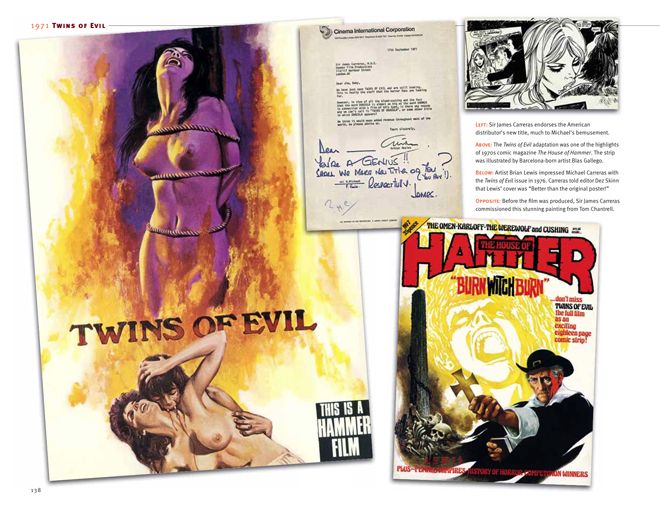
So yes, The Hammer Vault does adhere pretty closely to an established formula for this type of publication (there's even a limited edition slipcase version, numbered to just 1,000 copies that comes packaged with all manner of ticket, lobby card and art reproductions). But the difference here is that this book does it all so well. Every single page packs some sort of unexpected treat for fans, be it a previously unseen piece of concept art or a reproduction of a letter complaining about the working conditions in Hong Kong. It's a truly remakable hardback that deserves a place on every serious Hammer fan's Christmas list.
Marcus Hearn, Titan Books, £30 approx, On sale December 2
HCC VERDICT: 5/5
 |
Home Cinema Choice #351 is on sale now, featuring: Samsung S95D flagship OLED TV; Ascendo loudspeakers; Pioneer VSA-LX805 AV receiver; UST projector roundup; 2024’s summer movies; Conan 4K; and more
|

